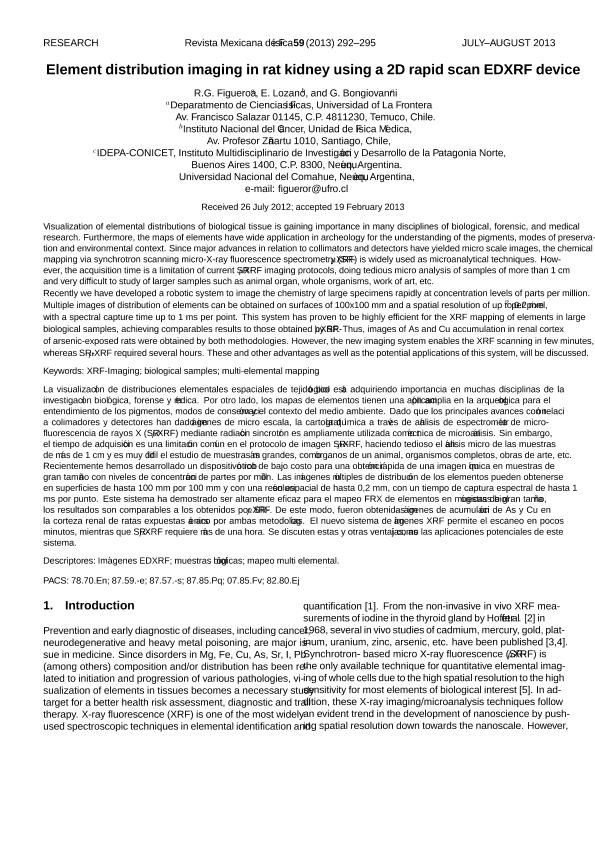Artículo
Element distribution imaging in rat kidney using a 2D rapid scan EDXRF device
Fecha de publicación:
06/2013
Editorial:
Soc Mexicana Fisica
Revista:
Revista Mexicana de Física
ISSN:
0035-001X
Idioma:
Inglés
Tipo de recurso:
Artículo publicado
Clasificación temática:
Resumen
Visualization of elemental distributions of biological tissue is gaining importance in many disciplines of biological, forensic, and medical research. On the other hand, the mapping of elements has wider application to the archaeological, to understanding pigments, modes of preservation, and environmental context. Since major advances in relation to collimators and detectors have yielded micro scale images, the chemical mapping via synchrotron scanning micro-X-ray fluorescence spectrometry (SR-µXRF) is widely used as microanalytical techniques. However, the acquisition time is a limitation of current SR-µXRF imaging protocols, doing tedious micro analysis of samples of more than 1 cm and very difficult to study of larger samples such as animal organ, whole organisms, work of art, etc. Recently we have developed a robotic system to image the chemistry of large specimens rapidly at concentration levels of parts per million. Multiple images of distribution of elements can be obtained on surfaces of 100x100 mm and a spatial resolution of up to 0.2 mm2 per pixel, with a spectral capture time up to 1 ms per point. This system has proven to be highly efficient for the XRF mapping of elements in large biological samples, achieving comparables results to those obtained by SR-μXRF. Thus, images of As and Cu accumulation in renal cortex of arsenic-exposed rats were obtained by both methodologies. However, the new imaging system enables the XRF scanning in few minutes, whereas SR-μXRF required several hours. These and other advantages as well as the potential applications of this system, will be discussed.
Palabras clave:
Xrf-Imaging
,
Biological Samples
,
Multi-Elemental Mapping
Archivos asociados
Licencia
Identificadores
Colecciones
Articulos(PROBIEN)
Articulos de INST. DE INVESTIGACION Y DES. EN ING. DE PROCESOS, BIOTECNOLOGIA Y ENERGIAS ALTERNATIVAS
Articulos de INST. DE INVESTIGACION Y DES. EN ING. DE PROCESOS, BIOTECNOLOGIA Y ENERGIAS ALTERNATIVAS
Citación
Figueroa, Rodolfo; Lozano, E.; Bongiovanni, Guillermina Azucena; Element distribution imaging in rat kidney using a 2D rapid scan EDXRF device; Soc Mexicana Fisica; Revista Mexicana de Física; 59; 6-2013; 262-266
Compartir




